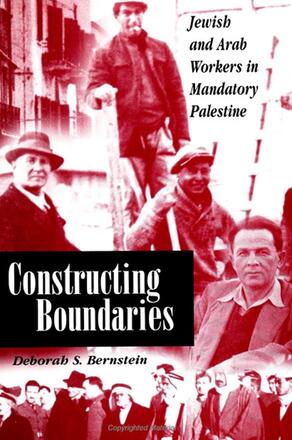
Constructing Boundaries
Jewish and Arab Workers in Mandatory Palestine
Alternative formats available from:
An interdisciplinary study discussing the impact of the national crisis in Mandatory Palestine on relations between Jewish and Arab workers and their respective labor movements.
Description
Constructing Boundaries examines the competition, interaction, and impact among Jewish and Arab workers in the labor market of Mandatory Palestine. It is both a labor market study, based on the Split Labor Market Theory, and a case study of the labor market of Haifa, the center of economic development in Mandatory Palestine. Bernstein demonstrates the impact of the pervasive national conflict on the relations between the workers of the two nationalities and between their labor movements. She analyzes the attempts of Jewish workers to construct boundaries between themselves and the Arab workers, and also highlights cases of cooperation between Jewish and Arab workers and of joint class struggle.
Deborah S. Bernstein is Senior Lecturer at the University of Haifa. She is the author of Struggle for Equality: Women in Pre-State Israeli Society and is the editor of Pioneers and Homemakers: Jewish Women in Pre-State Israel, also published by SUNY Press.
Reviews
"…an important contribution … " — Jewish Book World
"This is an exceptionally well-written book, very readable even while making a significant contribution to two literatures—both Split Labor Market theorizing and the Israeli historiography debate." — Joya Misra, University of Massachusetts–Amherst
"Bernstein has drawn on studies from a number of different disciplines—history, political science, economics, and geography, and she weaves them together into a compelling story of workers' lives and interactions in Haifa." — Donna Robinson Divine, Smith College